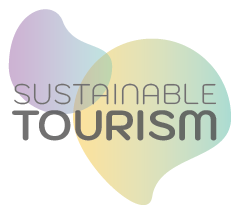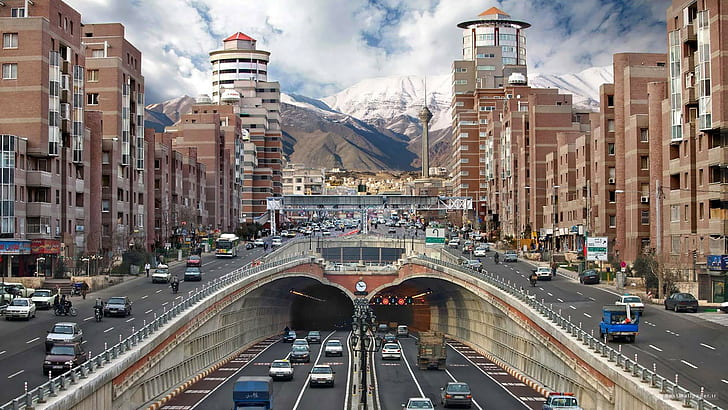TEHRAN TABIAT BRIDGE

Project Name: Tabiat Padestrian Bridge
Local Government: Tehran
Category: #GreenTourism #InclusiveTourism
Dates: 2019 – continiues
Contact: Reza Goudarzi (coordination.abasabad@tehran.ir)
PROJECT DETAILS
Location: Modarres Highway, Abbas Abad Lands,Tehran, Iran
Site Area: 6 ha
Ground Floor Area: 3200 sqm
Built Area: 7680 sqm
Length: 270 meter
Building Type: Structure, Public Buildings
Tabiat Pedestrian Bridge is located in the northern part of the city of Tehran in a zone called Abbas Abad Lands; this is a 559Ha area which is mainly dedicated to cultural spaces such as libraries and museums, as well as public parks. This bridge was designed in order to address the need to improve access for pedestrians between the two parks, which are divided by major highways. ‘Tabiat’ means ‘Nature’ in Persian language.
The bridge crosses Modarres Highway, one of the main highways of the city, and connects Abo Atash Park on the west to Taleghani Park on the east. The intention was to design a pedestrian route that was completely separate from the highway. The 270 meters long bridge is the largest pedestrian bridge built so far in Iran. Design of this bridge was the result of a two-phase competition which started in May 2008. The winning design was selected in August of the following year, with detailed structural and architectural design beginning in September 2009 and construction work began in September 2010. It was inaugurated in October 2014.
• The architectural concept was based on five main premises:
In the original master plan the idea was to connect one point in one park to one point in the other park, but here the architect’s idea was to create multiple paths on each park that would lead people on to the bridge. On the east side there are multiple paths branching from both levels of the bridge and connecting to other paths within Taleghani Park. On the west where it connects to Abo Atash Park, the bridge becomes 55 meters wide forming a plaza; this makes it difficult to recognize where the park ends and where the bridge starts. On the lower level similar to the other side there are other paths that connect the bridge to father points in the park.
This bridge is a space intended to be a place to linger rather than just one to pass through, and to act as an extension of the parks, so seating areas and green spaces on all parts of the bridge has been considered, as well as a coffee shop and restaurant on the two sides of the lower level, to have enough means to keep the users slow down and stay on the bridge.
Creating a curved path for the bridge was also intended to contribute to this aim; on the straight alignment that is typical of most bridges in order to achieve structural efficiency, produces a single point perspective, which encourages users to keep going and the destination is quite clear. In this case the idea was to make a curved path with variable width and changes in slopes, to slow down the users and create a sense of mystery about the destination. The width of the deck varies from 6m to 13m along its length.
Since the site was covered by trees, especially on the east side, the number of columns and their location was designed in a way to have the minimum footprint on the ground in order to avoid having to remove trees. This resulted in having three columns which widen on top and form a shape similar to trees, with the largest span between them over both lanes of the highway to be 93 meters.
The structural concept was to have a spatial structure large enough to create an inhabitable architectural space while at the same time acting as the structure. The result was a dynamic form made up of a 3dimensional truss with two continuous deck levels that sits on three tree shape columns. Where the truss meets the branches of the columns, it becomes the highest and widest. At these points the bridge becomes three levels, the third level areas act as viewing platforms, providing a wideopen space which can also be used for public performances.
Even though the bridges are usually considered as structural projects, here the approach was more architectural. All the levels are connected to each other by stairs and multiple ramps, providing multiple paths throughout the bridge to get from each level to another. This will provide numerous unique ways to experience the bridge, encouraging pedestrians to wander and get lost on this bridge. During the structural design phase, the dimensions were minimized as much as possible, with the height of the spatial truss of the deck and the diameter of the columns also being modified slightly. Since the steel structure is fully welded and continuous, design of each element impacts on all the others. In the case of the main columns, the critical load conditions are lateral loads due to seismic and wind loads. Particular attention was paid to pedestrian comfort in the design, in checking that pedestrian-induced accelerations were not in resonance with the natural frequencies of the bridge itself. Foundations are made with standard piles 25m long. The initial suggestion for construction was that the bridge should be assembled in five large pieces on the site and then lifted into place and welded together. However these pieces would have been too large to allow this method of construction, so the decision was taken to weld the pieces individually on site, creating an overwhelming amount of site welding.
Steel tubes for the structure were cut by CNC machine in the factory and brought to site in pieces; for the columns they were partly welded on the site right next to the bridge, and lifted by cranes and then assembled with further sections welded on in situ. For construction of the main body of the bridge, one tower crane was positioned inside each pier, and a temporary working platform was built 2m below the soffit of the bridge. Tubular elements for the superstructure were lifted by the tower cranes and were all welded on site individually. The platforms were necessary because the highway could not be closed, and this was the only way construction work could be carried out over live traffic.
LINKS TO SUSTAINABILTY
Target 5.1: End discrimination against women and girls (The designer of Tabiat Bridge was a 25 woman years old.)
Target 8.3: Promote policies to support job creation and growing enterprises
Target 8.9: Promote beneficial and sustainable tourism
Target 9.b: Support domestic technology development and industrial diversification
Target 11.3: Inclusive and sustainable urbanization
Target 11.4: Protect the world’s cultural and natural heritage
Target 11.7: Provide access to safe and inclusive green and public spaces


